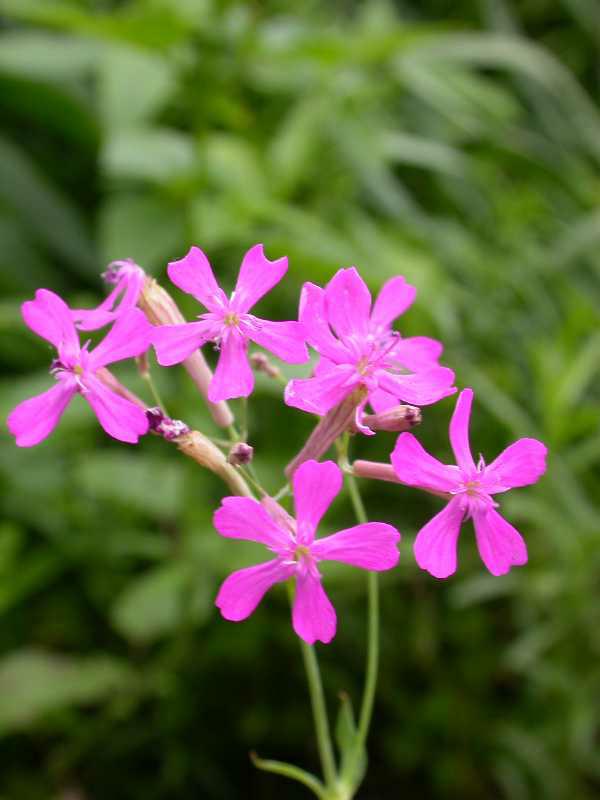Sweet William silene (Silene armeria)
Sweet William silene
Silene armeria is a catchfly that is native to Europe, but has escaped gardens and naturalized over time in parts of eastern and central North America and the Pacific Northwest. It is typically grown in U.S. gardens as a cool weather annual or biennial. Plants rise to 12-16” tall on upright stems clad with oval to lanceolate gray-green leaves (to 3” long). Oblanceolate basal leaves typically wither by mid-summer. Rounded clusters (flat-topped cymes) of rose-pink to magenta-pink flowers (each to 1/2” across) bloom in late summer. Each flower has 5 shallowly notched petals. The stems of this species are sticky and may snare small insects, hence the common name of catchfly. This species is also commonly called sweet William catchfly or none-so-pretty.
Genus name means catchfly or campion.

Grow in average, dry to medium moisture, well-drained soils in full sun to part shade. Plants prefer sunny sites in dryish sandy or gravelly soils with some part afternoon shade. Plants generally appreciate sharp soil drainage. Plants may be grown as annuals by starting seed indoors in pots about 8-10 weeks before last spring frost date. Seed may also be planted directly in the garden in fall or about 3 weeks before last frost date in spring. Plants may self seed in optimum growing conditions. Plants do not perform well in the hot and humid summers of the deep South.
| Hardiness zone | 5 - 8 |
| Sun light | Full sun to part shade |
| Water | Dry to medium |
| Maintenance | Medium |
No serious insect or disease problems.
Best in beds and annual borders.
| Common name | Sweet William silene |
| Botanical name | Silene armeria |
| Plant type | Herbaceous perennial |
| Family | Caryophyllaceae |
| Hardiness zone | 5 - 8 |
| Water | Dry to medium |
| Maintenance | Medium |
| Flower color | Rose pink |
| Flowering period | July - August |
| Height | 1 - 1.50 feet |
| Width | 0.50 to 0.75 feet |